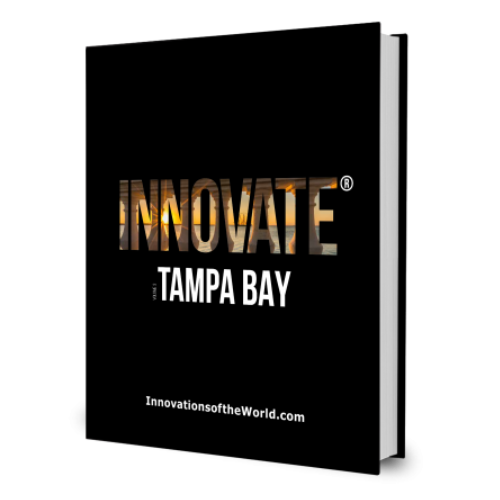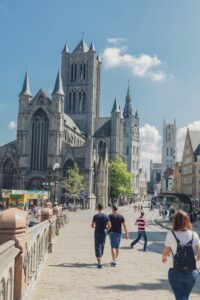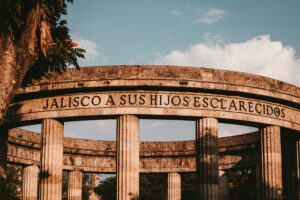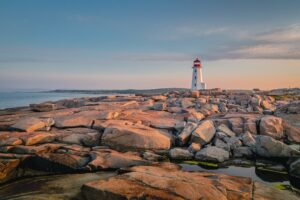It’s difficult to imagine an academic system more engaged with and devoted to local and global communities than the University of South Florida is. To think of Tampa isn’t to think automatically of a college or university town. But in taking a closer look at the University of South Florida, perhaps Tampa doesn’t seem like the “town to the gown” because USF has so seamlessly integrated itself in its local and regional communities.
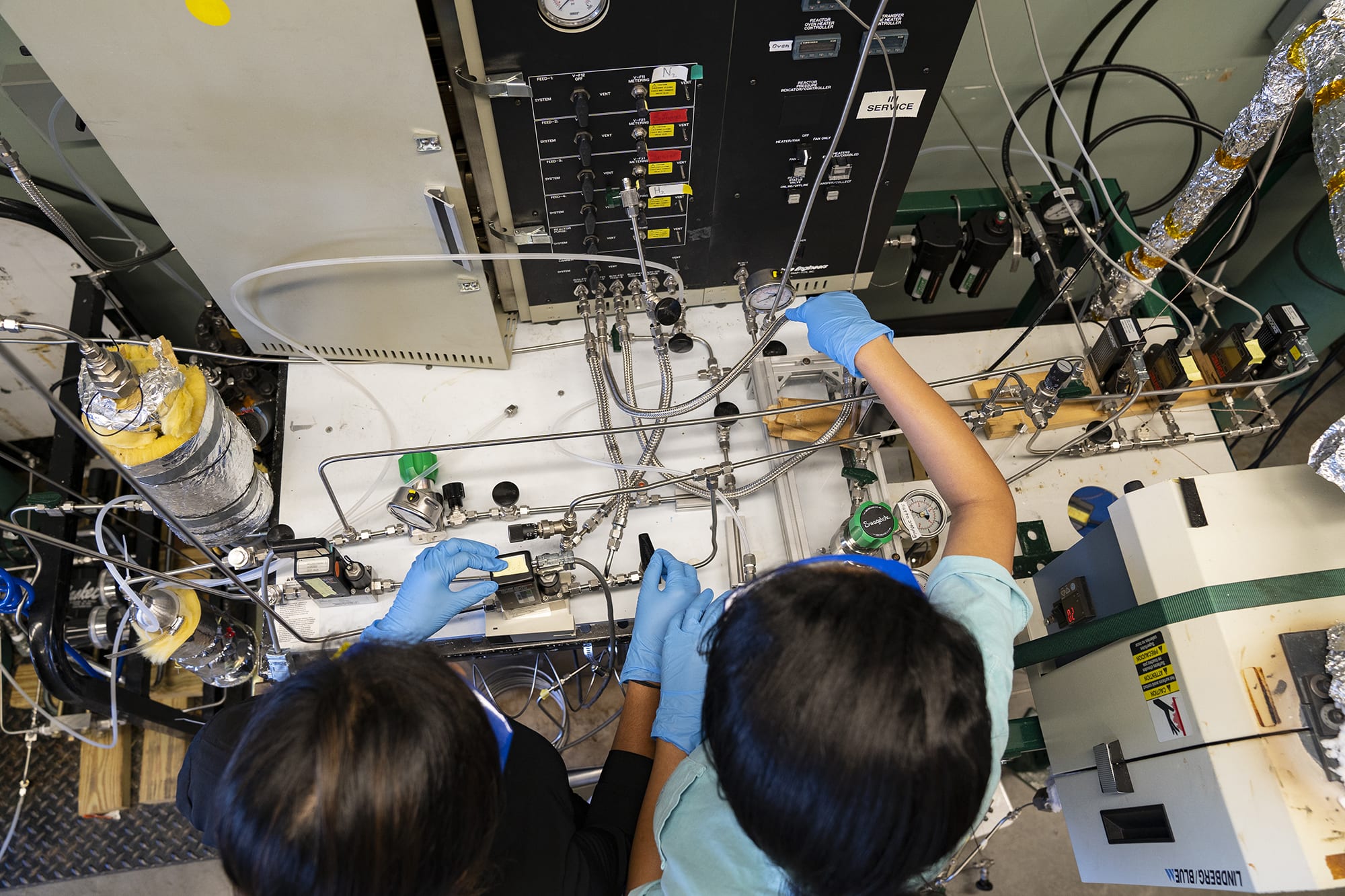
Yet the University of South Florida focuses on global research and it is the state’s leading metropolitan research university. Its curriculums, regardless of college, reflects this, as does its commitment to interdisciplinary projects and studies. At the heart of USF’s mission is innovation to the benefit of all.
Take for instance the university’s Suncoast Nursing Accelerated Pathway. First made available as a course of study in 2017, the program enables students on USF’s Sarasota-Manatee and St. Petersburg campuses to earn Bachelor of Arts degrees in nursing and in biology over the course of five years. This double-degree offering creates excellent value for nursing students, regardless of whether they decide to enter the field as soon as possible or to continue their studies on completion of the degree. The program brings students from USFSP and USFSM to the main campus in Tampa, where they experience and work with state-of-the-art equipment as part of their training, but clinical rotations take place closer to the students’ home campuses; that is, in Pinellas, Sarasota, or Manatee Counties.
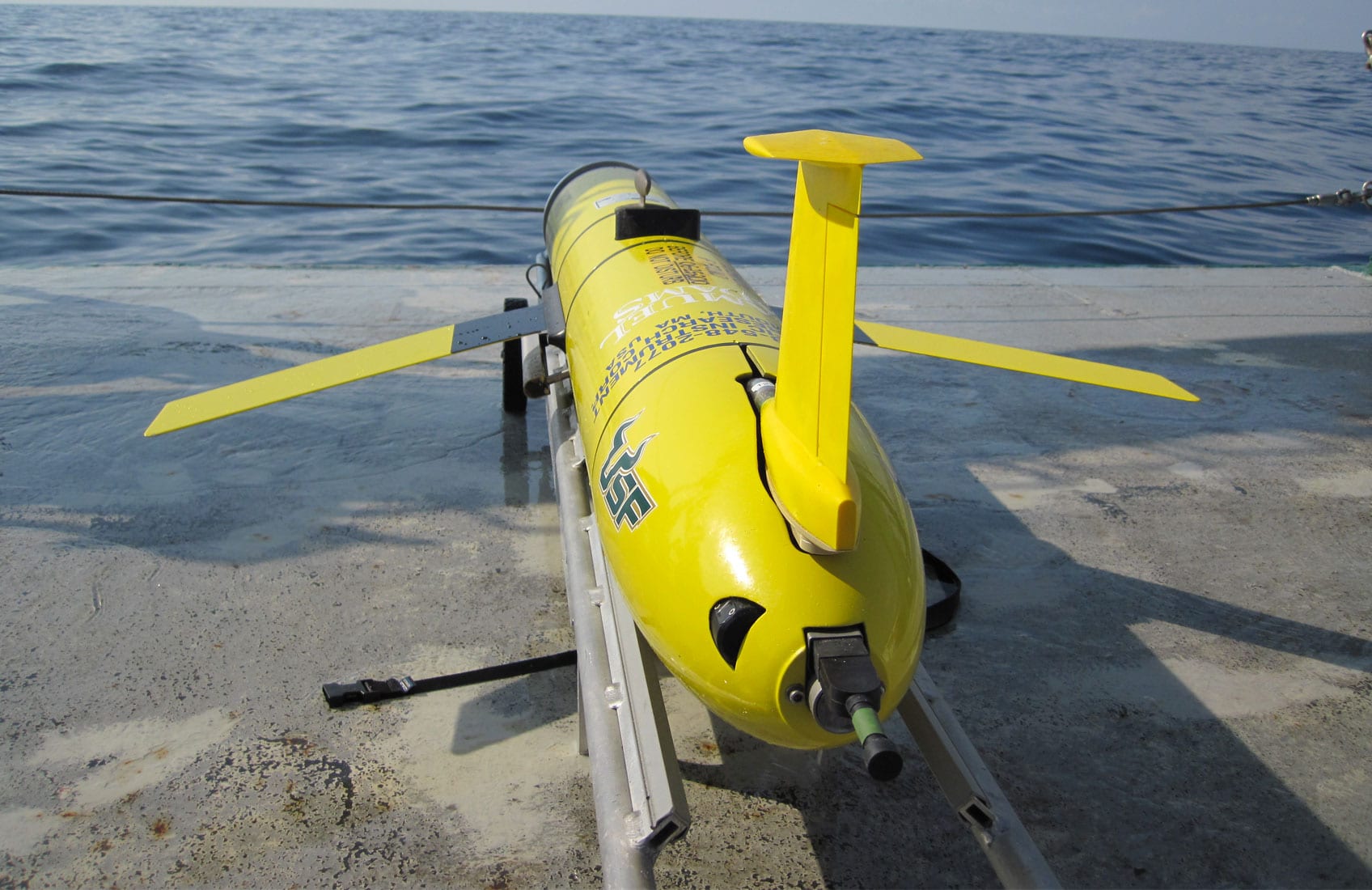
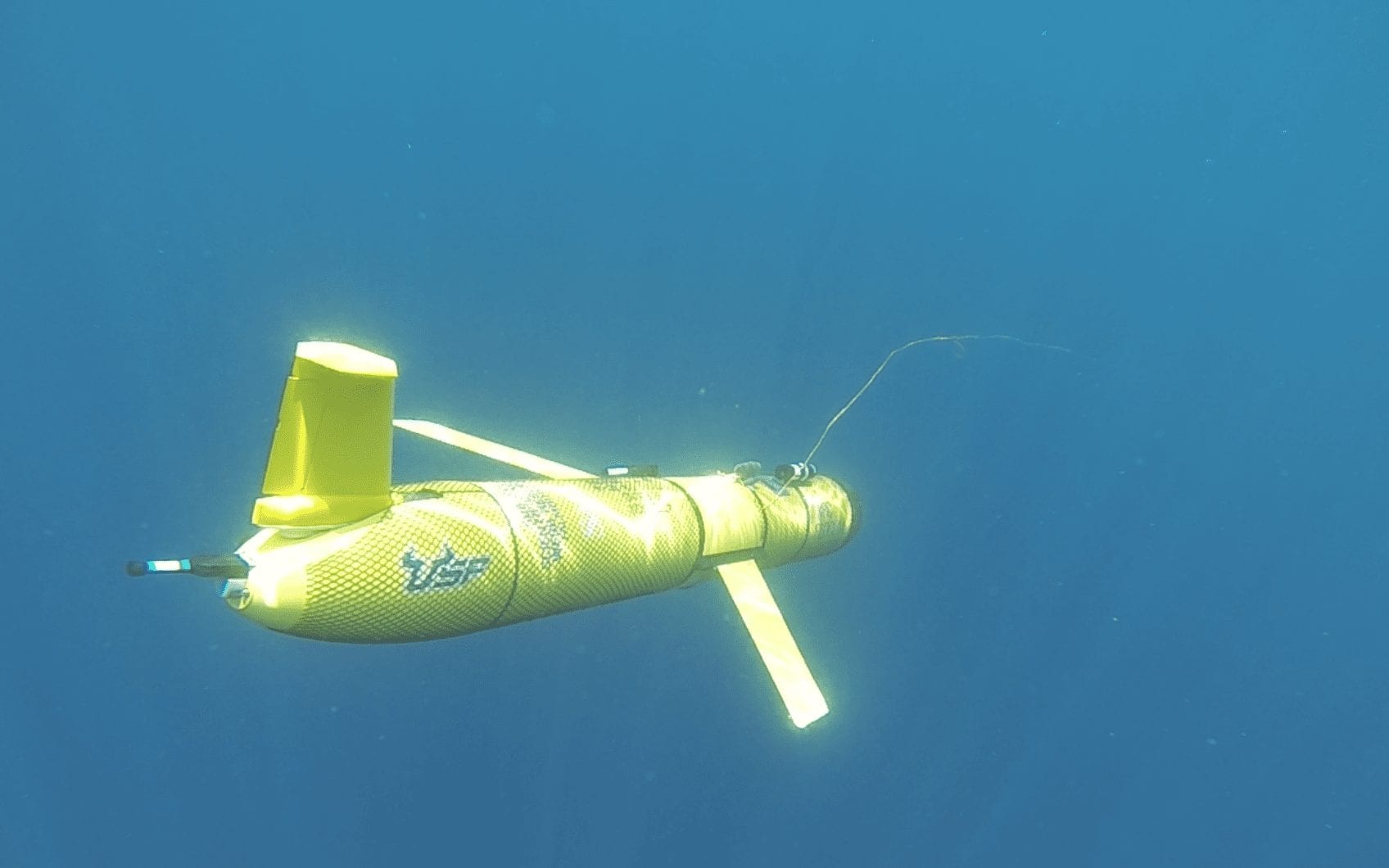
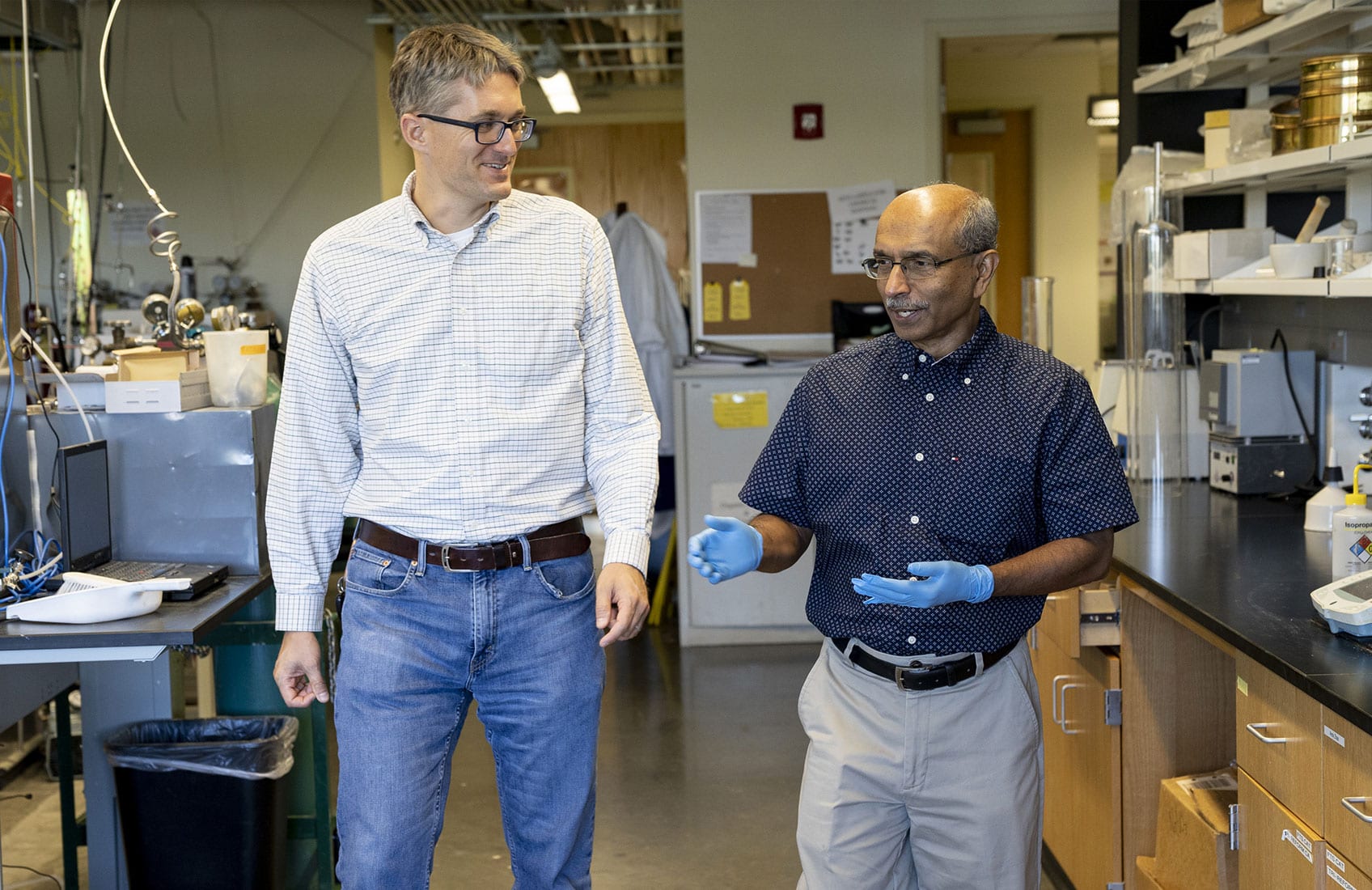
“Coming together as the USF System enables us to create this type of important educational program, optimizing the best elements of the component parts, maximizing the benefits of the system, and meeting compelling community needs across the Tampa Bay region.”– Donna Petersen, ScD and interim dean of USF’s College of Nursing
The advent of the Suncoast Nursing Accelerated Pathway is just one of many ways USF’s College of Nursing is “preparing 21st-century nurses to promote health and wellness in our community and around the world.” The college is ranked number one in the state, and 22nd in the country, for funding from the National Institute of Health, and its global nursing initiative allows students to earn credits while providing health and wellness outreach in Panama, Scotland, and St. Croix. Back at USF’s campus, simulation laboratories prepare nursing and other medical students for real-world medical situations long before they enter the workforce. USF is the only fully accredited university in Florida in all areas of assessment, research, system integration, and teaching and education, a designation awarded by the Society for Simulation in Healthcare.
Other colleges of USF Health are no less innovative. The College of Pharmacy’s Healthcare Imaginarium for Exponential Technologies™ (HEIT™) is, in its scope and ambition, exactly as exciting as it sounds. A bid to ensure the college’s continuing and absolute relevance, the HEITs™ represents the interdisciplinary collaborations and community partnerships that set USF apart.
One HEIT™ incorporates virtual-reality content, supplementing existing curriculums of the College of Pharmacy with life-like simulations. The digital imagery comes courtesy of a partnership with local digital content creator MediaLab 3D Solutions and also with BioLucid, and exemplifies USF’s eagerness to find solutions within its community.
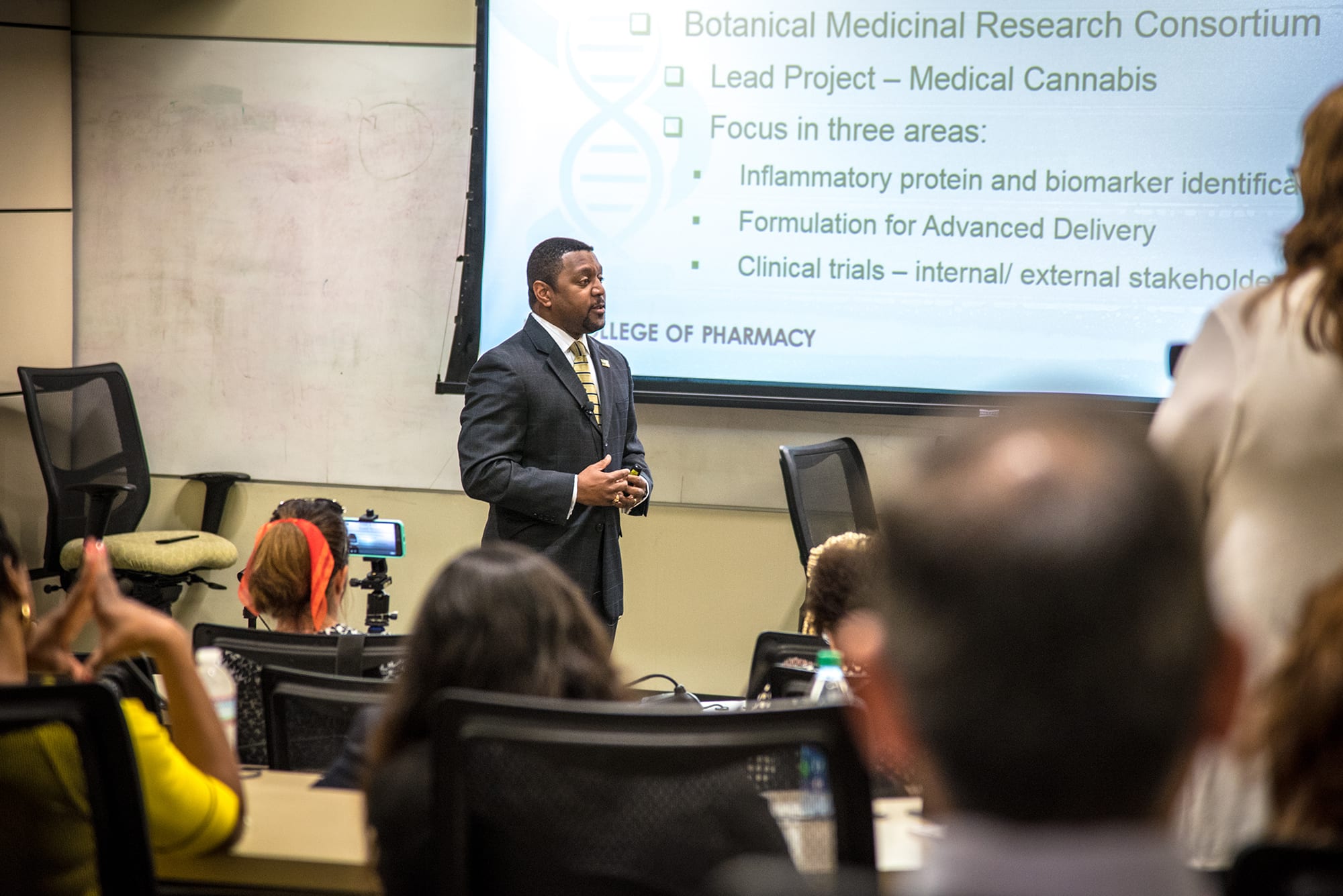
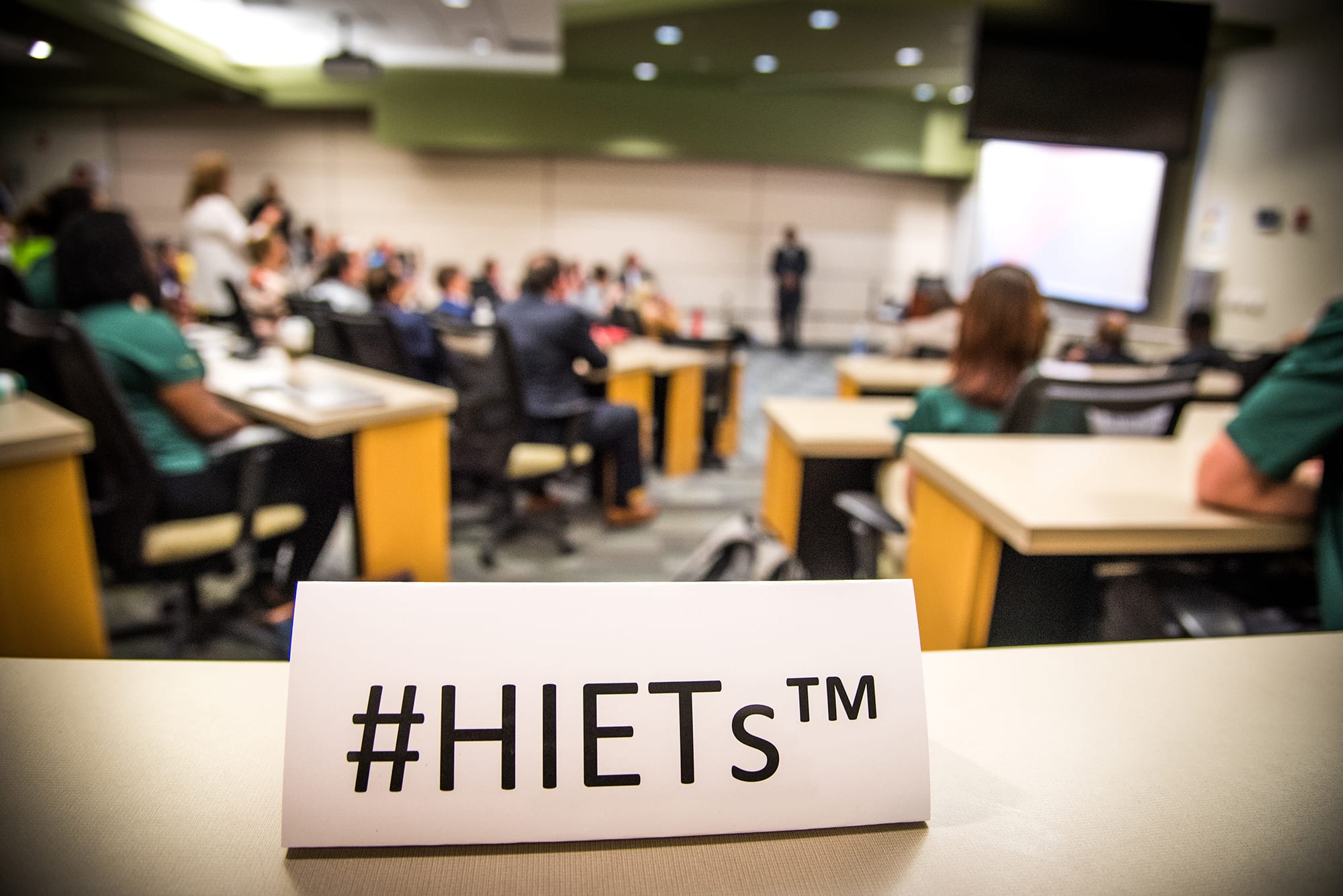
Students control the virtual experiences by means of handheld devices paired with a set of VR goggles, and the combination places them almost literally inside the human body. For example, the goggles’ field of vision might be a larger-than-life artery clogged with plaque, and the student can watch as a stent is placed to allow the blood to flow once more. Such three-dimensional and immersive experiences cater especially to visual learners, for whom textbooks and even videos fail to fully convey meaning, but regardless of their learning style, every student will have come as close as they can to real-life medical procedures, similar to how their College of Nursing peers will have done in their simulation labs.
Another HEIT™ garnering attention and support is the establishment of the Botanical Medicinal Research Consortium, which brings together researchers and clinicians of the Colleges of Pharmacy and Medicine, USF’s Center for Drug Discovery and Innovation, and other companies in and outside of Tampa, for the purpose of discovering evidence-based benefits of noneuphoric cannabis. Collaborators in the latter category include ANANDA Scientific, a manufacturer of nonpsychoactive and non-abusive oral cannabinoid health products, and also the UCLA Cannabis Research Initiative, one of the first academic programs to investigate cannabis in order to inform decisions of public policy and public health.
Other HEITs™ includes a collaboration between the Muma College of Business and the College of Pharmacy known as the Entrepreneurial Academy, where future pharmacists can learn to think like entrepreneurs in order to improve health outcomes and improve the cost efficiency of their practices. The College of Pharmacy has also partnered with the College of Engineering to explore the use of nanotechnology in dispensing medications, so that both the target site and the amount are optimal for the patient. Finally, WE-CARE (Workgroup Enhancing Community Advocacy and Research) and the College of Pharmacy have combined forces to increase the number of “minority and medically underserved populations” in clinical trials on genomic research.
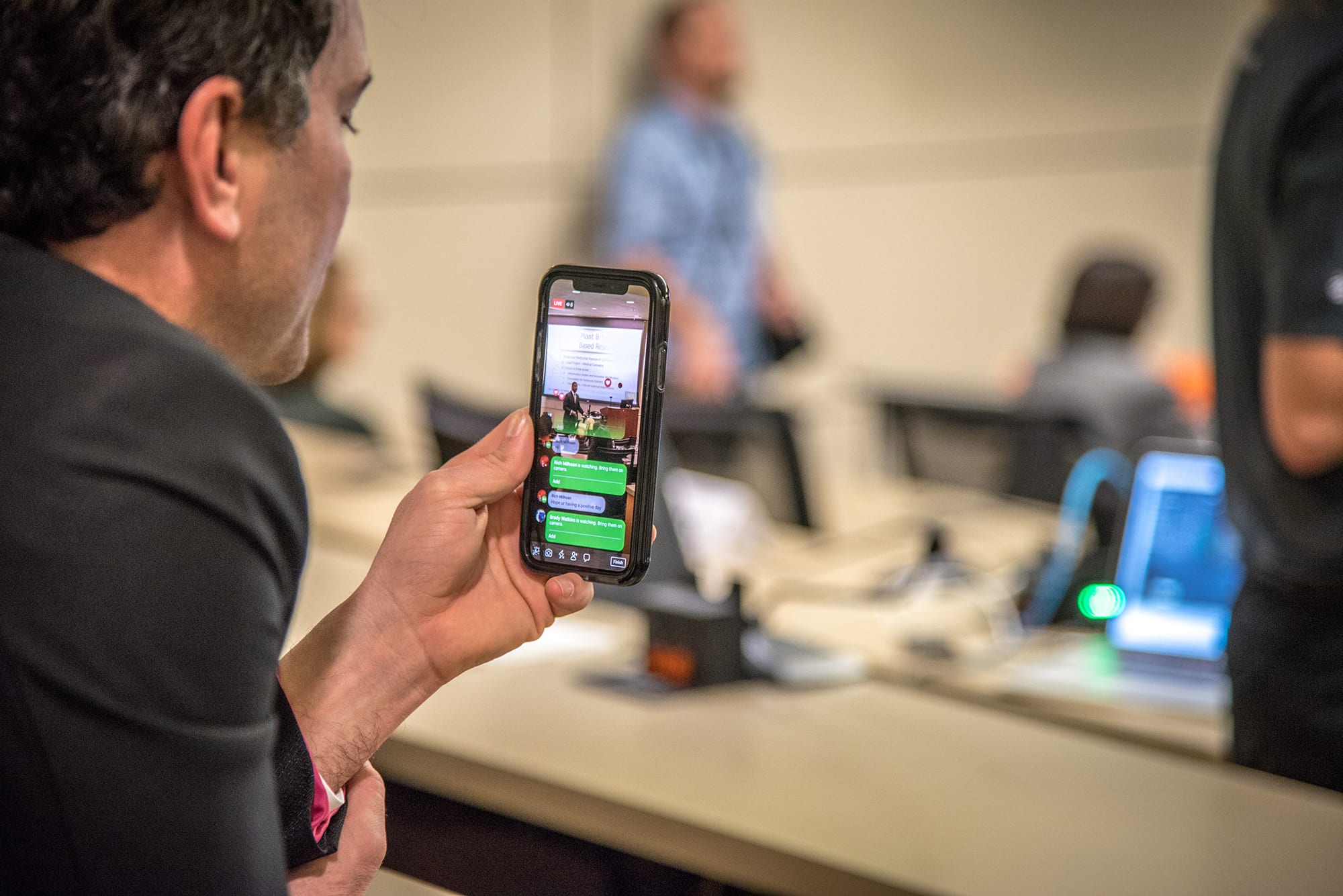
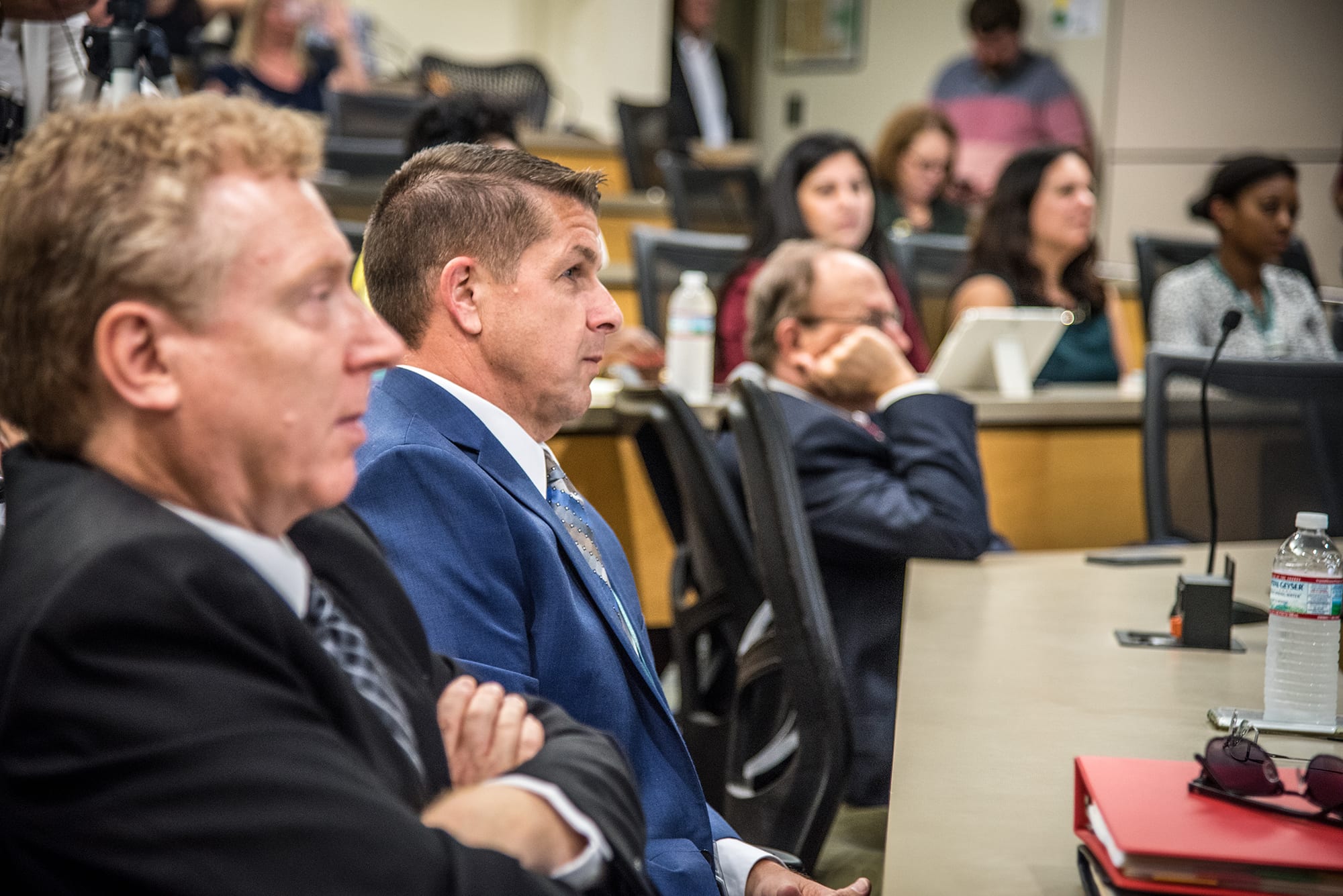
The forethought and compassion of these initiatives is obvious, and these qualities define other programs and partnerships throughout USF’s colleges.
The College of Marine Science, for example, partnered with Florida Fish and Wildlife Conservation Commission to send an autonomous robotic glider—think of one of those torpedo pool toys but at least five times that size—to seek out the organism K. brevis, which creates the red tides the Gulf and Florida coasts are often subject to. The team sent the glider 25-50 miles out from Clearwater Beach, tracking its progress along the continental shelf between Pasco and Sarasota Counties, where they suspected the organisms had drifted.
For 20 out of the past 25 years, Robert Weisberg, PhD, and Distinguished University Professor of Physical Oceanography, and his team have been able to account for those years’ red tide blooms, or the lack of them, and their research monitors the K. brevis that surrounds the coast. Currents, storms, and human activity have roles to play in the organisms’ travels— and its blooms—and Dr. Weisberg and his team tell that story. It is an especially important one because of the red tides’ effect on fish, seabirds, and sea mammals; the neurotoxins released during K. brevis’ blooms can cause illness or death, and humans who ingest contaminated shellfish can experience severe reactions. To know when and where to expect these blooms helps an ocean-dependent state to plan for and mitigate the red tides’ effects, and USF’s College of Marine Biology generates much of this information.
Meanwhile, in Florida’s interior, other USF scientists have turned their attention to a far less scenic feature than the state’s oceans: its landfills. Thanks to a $1.8 million grant from the Department of Energy, a team led by Drs. Babu Joseph and John Kuhn has been working to extract biogas to be converted into biofuel. Currently, landfills’ biomass (mainly comprising food scraps, lawn clippings, and agricultural waste) is converted to energy through burning, then converting that heat into electricity. But converting the landfills’ methane and carbon dioxide into biofuel results in so many more uses, since biodiesel can be used almost anywhere. In any case, the biomass found in landfills is an existing resource—and an unsavory one— which makes it the perfect candidate for energy conversion, especially since the gas it releases is harmful to the atmosphere. The one billion tons of biomass produced annually could, once converted, replace up to 30% of the petroleum consumed in the U.S.
Currently, converting biogas to biofuel is a two-step process; the first step uses a catalyst to create carbon monoxide from the methane and carbon dioxide, and the second uses a different catalyst to then convert the carbon monoxide to biofuel. Dr. Joseph and Dr. Kuhn hope to find a way to make it a one-step process, “making the entire method more efficient and feasible to be scaled up,” Dr. Kuhn explains.
USF’s College of Public Health is also attending to a pressing matter that could have enormous and positive consequences globally. International researchers from the Welcome Sanger Institute, led by Dr. Julian Rayner, and a team of USF scientists, led by Dr. John Adams and Dr. Rays Jiang, have discovered “the core repertoire of essential genes” in the world’s deadliest strain of the malaria parasite. Their findings were published in the May 2018 issue of Science.

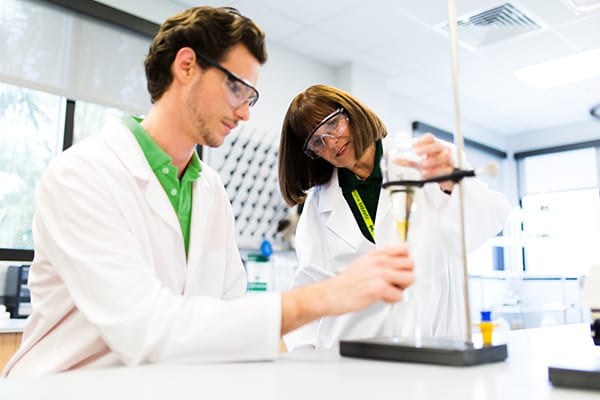
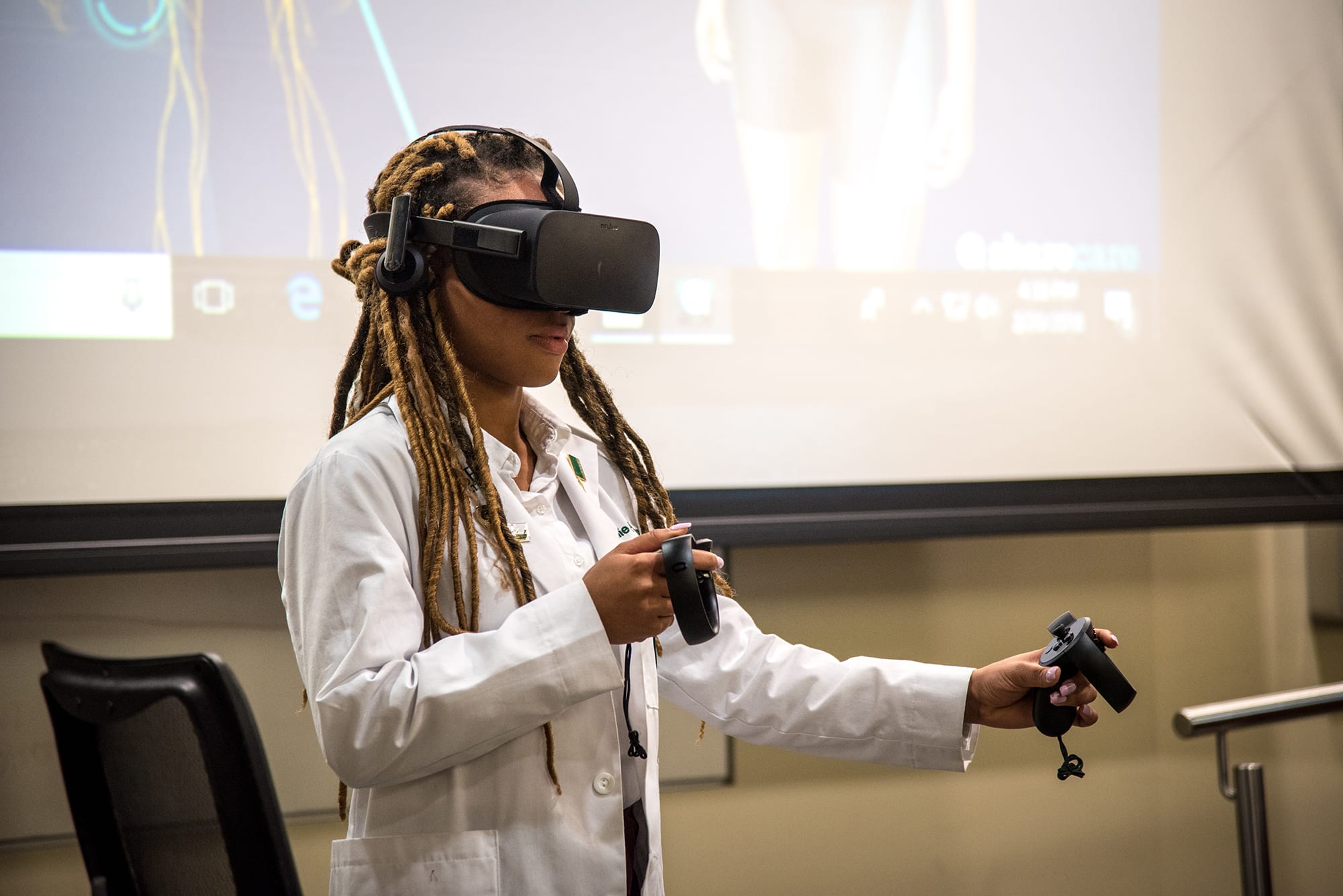
Plasmodium falciparum is responsible for 90% of malarial fatalities and 50% of all cases of malaria, which proves the potency of its threat.
“What our team has done is develop a way to analyze every gene in this parasite’s genome,” says Dr. Adams. “Using our genetic analysis tools, we’re able to determine the relative importance of each gene in the genome for parasite survival. This understanding will help guide future drug development efforts targeting those essential genes.”
The genes Dr. Adams mentions numbers in the thousands: 6,000 to be exact. By analyzing, identifying, and ranking each one, the teams discovered that 3,300 of the parasite’s genes are essential to its survival—though 1,000 of those have functions yet to be discovered.
Still, as author on the study Dr. Jenna Oberstaller notes, “This parasite is traditionally very difficult to genetically manipulate in the lab for a number of technical reasons. So, we’ve effectively gone from knowing only a few handfuls of this parasite’s essential genes, to defining essentiality of the entire genome.”
With multi-drug-resistant strains on the rise, this breakthrough is certain to increase the efficacy of future treatments and diminish the danger the parasite presents.
Though it’s nowhere in the university’s mission statement, it’s hard not to feel like the University of South Florida’s goal is to save the world. The scope of its collaborations and projects reach far beyond Tampa, and every innovation to its curriculums or to its degree programs empowers students to find not simply jobs but vocations—which in turn improve the lives of those they touch. Its commitment to community, both local and global, sets an example that anyone anywhere would be wise to follow.

